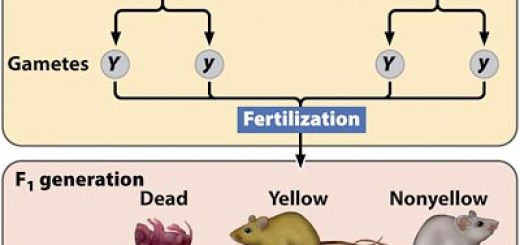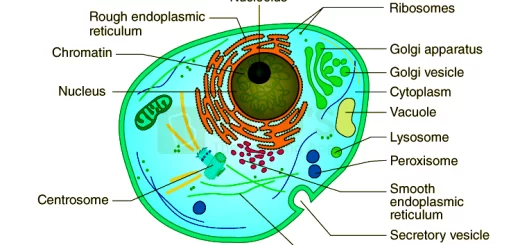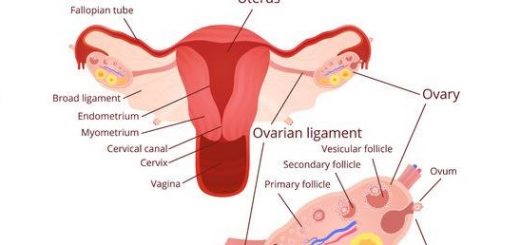Autonomic nervous system, Reflex action types and Autonomic ganglia function
In the human body, there are two main control systems: the endocrine system and the nervous system, both coordinate the functions of various systems in order to maintain homeostasis. The endocrine system exerts a relatively slow control, through secreting hormones, which regulate growth and metabolic processes within the cells.
Nervous system
The nervous system exerts rapid control by serving three broad functions: sensory, integrative, and motor.
- First, it senses changes within the body and in the outside environment; this is its sensory function.
- Second, it interprets the changes; this is its integrative function.
- Third, it responds to the interpretation by initiating action, such as muscular contractions or glandular secretions, this is its motor function.
Functional organization of the nervous system
The nervous system is composed of two major parts or subdivisions:
- The central nervous system (CNS) consists of the brain & spinal cord.
- The peripheral nervous system (PNS), which consists of cranial nerves and spinal nerves.
The central nervous system (CNS)
The brain
The brain consists of many parts that function as an integrated system. The major parts are the cerebrum (cerebral cortex), cerebellum, basal ganglia, brain stem (midbrain, pons, and medulla), the thalamus, and the hypothalamus.
Spinal cord
In cross-section, the spinal cord shows a central butterfly-shaped area of grey matter with 3 projections called horns: dorsal, lateral, and ventral, The grey matter is surrounded by white matter, which consists of groups of myelinated axons.
These groups of fibers run longitudinally through the cord, some descending to relay information from the brain to the spinal cord, others ascending to transmit information to the cortex. The spinal cord is divided into 31 segments with a pair of spinal nerves arising from each segment. Each spinal nerve arises from the spinal cord by 2 roots:
- Dorsal (afferent sensory) root: fibers of which originate in the periphery from sensory receptors and terminate in the dorsal horn. the cell bodies of these afferent fibers are located outside the spinal cord in clusters called dorsal root ganglia.
- Ventral (efferent motor) root: Fibers of which originate in the ventral horn and travel to the periphery where they form synapses with skeletal muscles.
The connection between neurons inside the CNS is called a synapse. Synapse is the site of contact between 2 neurons i.e. the site of contact between the axon terminals of one neuron and the cell body or dendrites of another neuron. (there is no cytoplasmic continuity between neurons).
The peripheral nervous system
It includes cranial and spinal nerves, the peripheral nervous system is either somatic or autonomic. The somatic nervous system controls the voluntary movements of the skeletal muscle. The autonomic nervous system is divided into the sympathetic and parasympathetic nervous system and controls the action of the internal organs and glands. i.e. functions of the heart, glands, and viscera.
Neurons of the peripheral nervous system (PNS) that conduct impulses away from the central nervous system (CNS) are known as the motor or efferent neurons. The unit structure of the nervous system is the nerve cell (neuron). There are two major categories of motor neurons:
- Somatic motor neurons have their cell bodies within the CNS (anterior horn cell) and send axons to skeletal muscles, which are usually under voluntary control. It is a thick myelinated type Aα fiber with fast conduction of about 100m/sec.
- Autonomic motor neurons: involves two neurons in the efferent pathway: preganglionic and post-ganglionic neurons with autonomic ganglia in between.
Reflex action
It is an unavoidable beneficial inborn response brought about by a stimulus (a sudden change of the external or internal environment.
Types of reflex action
- Somatic reflex action: when the responding tissue is the skeletal muscle.
- Autonomic reflex action: concerned with reflexes of internal organs or viscera such as gastrointestinal tract, urinary bladder … etc.
Reflex Arc is the pathway of reflex action. It consists of 5 different components:
Receptor → Afferent neuron → center → efferent neuron → effector organ.
Functional organization of the autonomic nervous system
The autonomic nervous system (ANS) is the part of the nervous system that is responsible for homeostasis, the Autonomic motor nerves innervate the organs whose functions are not usually under voluntary control.
Divisions of the autonomic nervous system
Anatomically:
- Cranial outflow (cranial nerves III, VII, IX, and X).
- Thoraco-lumbar outflow (from T1- L2).
- Sacral outflow (sacral 2,3 and 4).
Functionally:
- The sympathetic nervous system (thoraco-lumbar from T1-L2).
- The parasympathetic nervous system (cranio- sacral) including:
- Cranial nerves III, VII, IX and X.
- Sacral 2,3 and 4.
Autonomic ganglia
As previously mentioned, the peripheral efferent portions of the autonomic nervous system are made up of preganglionic and postganglionic neurons.
- The preganglionic neuron has its cell body in the gray matter of the brain or spinal cord (lateral horn cell). The axon of this neuron does not directly innervate the effector organ but instead synapses with a second neuron within an autonomic ganglion. This neuron is a thin myelinated type B fiber with a conduction velocity of about 10 m/sec.
- The postganglionic neuron is the second neuron in this pathway, which has an axon that extends from the autonomic ganglion to an effector organ, where it synapses with its target tissue. It is thin unmyelinated C fiber with a velocity of conduction of about 1 m/sec.
The autonomic ganglion is an aggregation of cell bodies of neurons outside the CNS. In the sympathetic system, the preganglionic fibers relay mainly in ganglia located near the spinal cord. On the other hand, in the parasympathetic system, the preganglionic fibers relay in ganglia present close to or even embedded in the effector organs. Each preganglionic fibre relays once only, though it may pass through several ganglia.
Types of autonomic ganglia
- Lateral (parvertebral) ganglia.
- Collateral (prevertebral) ganglia.
- Terminal (peripheral) ganglia.
Lateral ganglia
The lateral ganglia lie on each side of the vertebral column forming two chains known as sympathetic chains (the lateral ganglia are the sites of the relay of sympathetic fibers).
The sympathetic chain contains one ganglion for each segmental nerve, except in the cervical region, where individual ganglia become variably fused to form three ganglia: the superior, middle, and inferior cervical ganglia.
Collateral ganglia
Collateral ganglia lie between the sympathetic chain & the organ of supply. They are the site of the relay of the preganglionic sympathetic fibers that supply the abdominal and pelvic viscera.
Terminal ganglia
- They are present near (or on the surface) of the innervated organs.
- They are the sites of relay of the parasympathetic fibers.
Functions of the autonomic ganglia
The ganglia act as distributing centers:
- In the sympathetic system, the preganglionic fiber synapses with and activities many postganglionic neurons. This allows for widespread distribution of nerve impulses over wide areas of the body; thus producing generalized sympathetic effects.
- In the parasympathetic, the preganglionic fiber synapses with and activates only a few postganglionic neurons. Therefore, this arrangement produces localized and discrete parasympathetic activities.
Site of relay: Autonomic ganglia are stations for the relay of preganglionic fibers coming from the CNS.
Site of release of chemical transmitter: Acetylcholine is the mediator liberated at all preganglionic endings (sympathetic and parasympathetic). It is responsible for the transmission of nerve impulses from preganglionic to postganglionic neurons (synaptic transmission).
Physiology of central human reflexes, Types & properties of Spinal cord reflexes
Functions of Sympathetic nervous system & Role of the sympathetic in emergencies
Functions of parasympathetic nervous system, Antagonistic & Synergistic effects
Chemical transmission in Autonomic nervous system & Control of autonomic functions
Homeostatic control mechanisms, Positive & Negative feedback mechanisms
Productive organs, Germ cells, Fertilization, Stages of cleavage, Implantation & Decidua
Placenta types, structure, function, development & abnormalities



